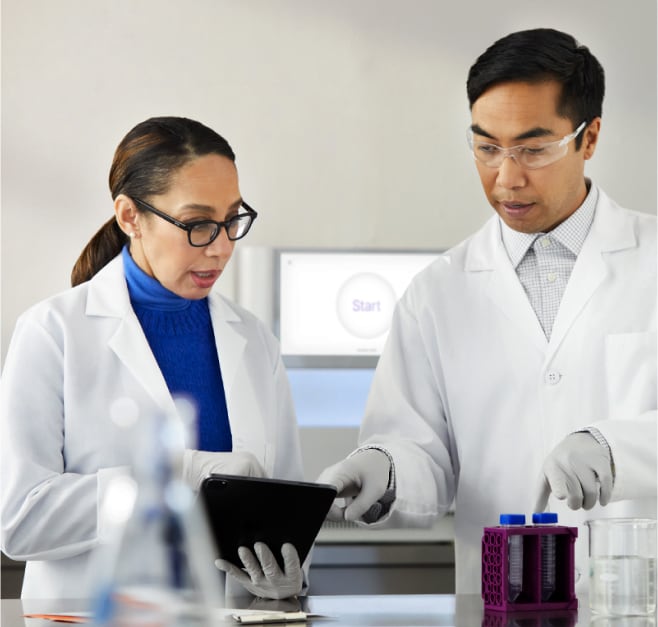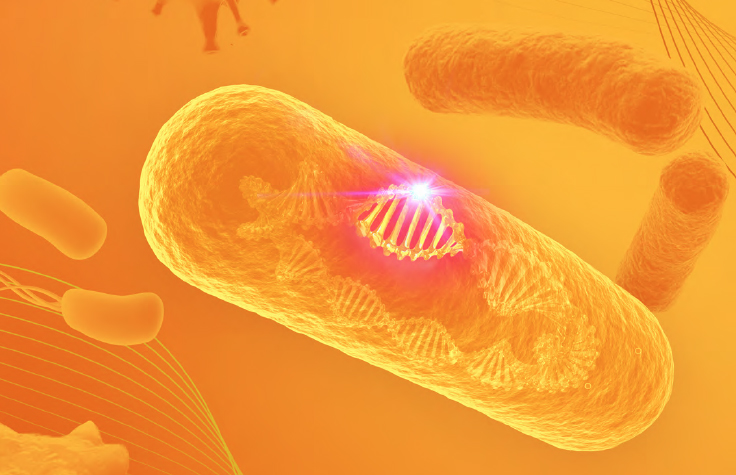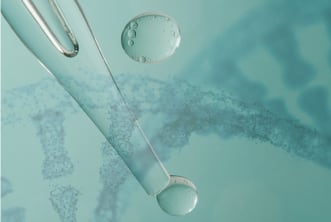폐수 감시 시스템

폐수 감시 시스템이란 무엇인가요?
폐수 감시 시스템은 폐수에서 발견되는 병원균을 검출, 식별, 특성화하는 방법입니다.
이 방법은 군집 수준에서 질병 발생 및 기타 위협을 모니터링하는 데 도움이 되는 데이터를 제공합니다. 이러한 위협이 어디에 있는지 파악함으로써 지역사회는 공중 보건 대응 중에 자원을 더 잘 할당할 수 있습니다. 폐수의 유전체 정보는 지역사회에 존재하는 병원체를 판별할 뿐만 아니라, 지역사회에 존재할 수 있는 균주와 변이 수를 식별하는 데 사용할 수 있습니다.

폐수 감시 시스템은 어떻게 작동하나요?
폐수 감시 시스템은 하수도에서 병원균을 검출하는 프로세스입니다. 샘플는 폐기물 처리 전에 채취하여 검사실에서 분석하여 지역사회에서 병원체의 유형과 그 수치를 식별합니다.1 차세대 시퀀싱(NGS)을 사용하여 샘플을 분석할 수 있으며, 이는 공중 보건 공무원에게 규모에 따라 감염을 추적하는 보다 빠르고 포괄적인 방법을 제공합니다. NGS는 또한 질병의 지리적 확산, 지역사회 수준 반응의 효과 등에 대한 정보를 제공할 수 있습니다.
관련 앱 노트
폐수 감시로 새로운 감염병 추적
이 애플리케이션 노트는 공중 보건 노력을 뒷받침하는 폐수 감시에서 광범위한 바이러스 검출을 위한 NGS 워크플로우를 간략히 설명합니다.
비뇨기 병원체 ID/AMR 패널을 이용한 폐수 감시
이 애플리케이션 노트는 MiSeq i100 Series 및 Urinary Pathogen ID/AMR Panel이 공중 보건을 위한 폐수 감시를 지원하기 위해 샘플에서 항생제 내성 유전자(ARG) 및 세균 병원체를 직접 검출하고 특성 확인하기 위한 NGS 워크플로우를 제공하는 방법을 설명합니다.

병원균의 신속한 식별 및 특성 확인을 위한 정밀 메타지노믹스의 활용
이 eBook을 다운로드하여 정밀 메타지노믹이 어떻게 차세대 시퀀싱의 역량을 통해 병원체를 신속하게 검출하고 그 특성을 규명하는 혁신적인 솔루션을 제공하는지 알아보세요.
eBook 다운로드PCR 대 NGS 기반 폐수 감시 시스템
폐수 감시 시스템이 제약, 화학, 산업 폐기물을 감지하는 데 사용되어 왔지만, 현재 지역 사회에 상당한 영향을 미치는 항생제 내성 표지자, 박테리아, 바이러스에 대해 폐수를 모니터링하는 것이 그 어느 때보다 중요합니다. 공중 보건에 대한 위험이 높은 병원체를 검출하기 위해, RT-PCR과 NGS가 감시 시스템 기법의 최전선에 있습니다.2,3 폐수 시퀀싱에 대한 각 접근법에 대해 더 알아보려면 아래 비교를 참조합니다.
| RT-PCR | NGS | |
| 표적 | 유전체의 작은 영역만 표적으로 함 | 전체 유전체를 표적으로 하고 특성 규명함 |
| 비용 | 비용 절감 | 더 높은 비용 |
| 처리량 기능 | 낮은 처리량 | 고처리량 |
| 변이 검출 | 변이를 검출할 수 없음 | 변이를 검출하고 식별할 수 있음 |
| 데이터 | 데이터 해석이 더 쉬움 | 데이터가 더 복잡하고 포괄적임 |
폐수 감시 시스템에는 어떤 방법이 있나요?
폐수 샘플에는 보통 하나의 병원균만 포함하는 임상 샘플과는 대조적으로 여러 병원균과 미생물이 포함되어 있습니다.4 관심대상 병원체를 분석하기 위해, 앰플리콘 또는 인리치먼트 기반 NGS 라이브러리 준비 방법을 사용하는 것이 권장됩니다. 앰플리콘 기반 접근법은 프라이머를 사용하여 단일 바이러스의 미생물 및/또는 전체 유전체의 영역을 특이적으로 표적화하는 반면, 인리치먼트 접근법은 프로브 하이브리드화를 사용하여 관심 유전체를 포획합니다. 또한, 샷건 메타유전체 시퀀싱은 샘플 내 모든 유전자와 미생물을 분석하는 포괄적인 방법을 제공합니다.5
앰플리콘
앰플리콘 기반 접근법은 프라이머를 사용하여 미생물의 영역 및/또는 단일 바이러스의 전체 유전체를 특이적으로 표적화합니다. 과학자들이 폐수 감시 시스템을 위해 앰플리콘 기반 방법을 사용하는 방법을 읽어 보세요.
폐수 감시 시스템을 통한 조기 탐지
폐수 유전체 역학이 어떻게 지역사회 전체의 감염 역학 및 감시를 편견 없이 표현하여 공중 보건 조치 및 정책 결정을 안내할 수 있는지 읽어 보세요.
폐수에서 SARS-CoV-2 변이 식별
과학자들은 폐수 샘플의 표적 앰플리콘 시퀀싱이 어떻게 강력한 감시 시스템 도구이며 새로운 SARS-CoV-2 변이의 조기 검출에 기여할 수 있는지에 대해 설명합니다.
하이브리드 캡처 인리치먼트
하이브리드화 기반 인리치먼트는 주어진 샘플에서 특정 유전자 변이를 분석하여 광범위한 입력 유형 및 양에 걸쳐 신뢰할 수 있는 결과를 제공하는 유용한 전략입니다. 연구자들이 폐수 감시 시스템을 위해 하이브리드 캡처 인리치먼트 방법을 사용하는 방법에 대해 더 알아보세요.
항균제 내성 모니터링
폐수 기반 역학이 어떻게 커뮤니티 수준의 데이터를 제공하여 현재 및 새로운 항균제 내성 위협을 식별함으로써 보다 전통적인 감시 시스템 노력을 보완할 수 있는지 알아보세요.
영역 특이적 SARS-CoV-2 변이 검출
조사관들은 폐수 시퀀싱을 통한 역학 감시 시스템이 유행 상황에서 정확한 바이러스 균주를 추적하는 데 어떻게 도움이 될 수 있는지 자세히 설명합니다.
샷건 메타지노믹스
샷건 메타지노믹 시퀀싱을 통해 연구자들은 주어진 복잡한 샘플에 존재하는 모든 유기체의 모든 유전자를 포괄적으로 샘플링할 수 있습니다. 샷건 메타지노믹스는 또한 다른 방법으로는 분석이 어렵거나 불가능한 배양이 불가능한 미생물을 연구할 수 있는 수단을 제공합니다. 샷건 메타지노믹스가 폐수 감시 시스템에 어떻게 사용되고 있는지 알아보려면 아래 논문을 참조하세요.
폐수 RNA-Seq를 사용하여 새로운 바이러스 및 풍토병 바이러스 검출
과학자들은 RNA-Seq를 사용하여 동시에 여러 감염병을 검출하고, 인도에서 의료 서비스 중재를 지시하는 데 도움이 되는 지리적 및 역학적 데이터를 제공합니다.
메타지노믹 및 저항 분석
과학자들이 어떻게 메타지노믹스 샷건 시퀀싱과 실시간 PCR을 사용하여 박테리아와 파지 다양성의 조성과 폐수 처리 플랜트 내 주요 처리 프로세스의 저항을 특성 규명했는지 읽어 보세요.
NGS 워크플로우 파인더
다음 워크플로우에서 추측을 배제하세요. NGS 워크플로우 파인더는 개인화된 솔루션 권장 사항과 리소스를 제공하므로 안심하고 순서를 지정할 수 있습니다.
지금 바로 연구에 적합한 차세대 시퀀싱(NGS) 워크플로우 확인하기관련 제품
Viral Surveillance Panel
SARS-CoV-2, 인플루엔자, Mpox virus, Poliovirus를 포함하여 공중 보건에 대한 위험이 높은 66가지 바이러스를 규명할 수 있는 전장 유전체 시퀀싱(WGS) 자료를 획득합니다.
Illumina COVIDSeq Test
COVID-19가 의심되는 환자에서 SARS-CoV-2를 검출하고 연구용 바이러스 유전체 분석을 가능하게 하는 고처리량, 차세대 시퀀싱 검사.
Respiratory Pathogen ID/AMR Enrichment Panel Kit
민감도 높은 포괄적인 병원체 검출 및 항균제 내성(AMR) 인사이트를 제공하는 차세대 시퀀싱(NGS) 기반 호흡기 병원체 패널.
Urinary Pathogen ID/AMR Enrichment Kit
170가지가 넘는 흔한, 덜 흔한, 성장하기 어려운, 빈번하게 놓친 요로병원균을 검출하고 정량화하는 차세대 시퀀싱(NGS) 패널.
Respiratory Virus Oligo Panel
COVID-19 균주를 포함한 일반적인 호흡기 바이러스를 포괄적이고 신속한 표적 인리치먼트 시퀀싱으로 검출하고 특성 규명하는 높은 민감도의 NGS 패널입니다.
Ribo-Zero Plus Microbiome rRNA Depletion Kit
대변을 포함한 복잡한 미생물 샘플의 메타전사체 시퀀싱을 위한 간소화된 RNA-to-분석 솔루션입니다.
폐수 감시 시스템을 위한 차세대 시퀀싱 솔루션을 받고 싶으세요?
아래 양식을 작성하시면 연락드리겠습니다.추가 리소스
폐수 기반 역학
이 앱 노트에서 폐수 시퀀싱을 통한 감염병 감시 시스템이 지역사회에서 SARS-CoV-2 변이 및 기타 호흡기 바이러스를 검출할 수 있는 방법을 알아보세요.
폐수 감시 시스템이 공중 보건을 보호할 수 있나요?
이 기사를 읽고 Biobot Analytics가 어떻게 폐수 데이터를 사용하여 코로나 서지 및 기타 발병을 예측하는지 알아보세요.
폐수 시퀀싱에서 초기 크립틱 SARS-CoV-2 변이 전파가 드러남
이 과학 출판물에서 폐수 감시 시스템이 어떻게 조기 COVID 전파를 밝혀내는 데 도움이 되는지 알아보세요.
Poliovirus 환경 감시 시스템
이 출판물에서 과학자들은 아이티에서 비polio enterovirus와 poliovirus를 검출하기 위한 환경 감시 시스템 프로그램을 확립한 방법에 대해 논의합니다.
폐수 감시 시스템을 사용하여 COVID-19 탐지
보건 당국이 바이러스의 확산을 추적하고 폐수 시퀀싱을 사용하여 샘플를 검사하여 확산된 B.1.17 균주와 같은 새로운 변이를 식별하는 방법을 알아보세요.
관련 비디오
참고 문헌
- Wastewater Monitoring—How Does It Work? cdc.gov/nwss/pdf/Wastewater-COVID-infographic-h.pdf. 2023년 12월 7일 접속.
- Science & Tech Spotlight: Wastewater Surveillance. gao.gov/products/gao-22-105841. 2023년 12월 7일 접속.
- Diamond MB, Keshaviah A, Bento AI, et al. 병원체에 대한 폐수 감시 시스템은 공중 보건 대응에 정보를 제공할 수 있습니다. Nature Medicine 2022; 28(10):1992-1995.
- Levy JI, Andersen KG, Knight R, et al. 공중 보건을 위한 폐수 감시 시스템. Science 2023 Jan 6;379(6627):26-27.
- Wensel CR, Pluznick JL, Salzberg SL, et al. Next-generation sequencing: insights to advance clinical investigations of the microbiome. J Clin Invest. 2022 Apr 1; 132(7): e154944.








